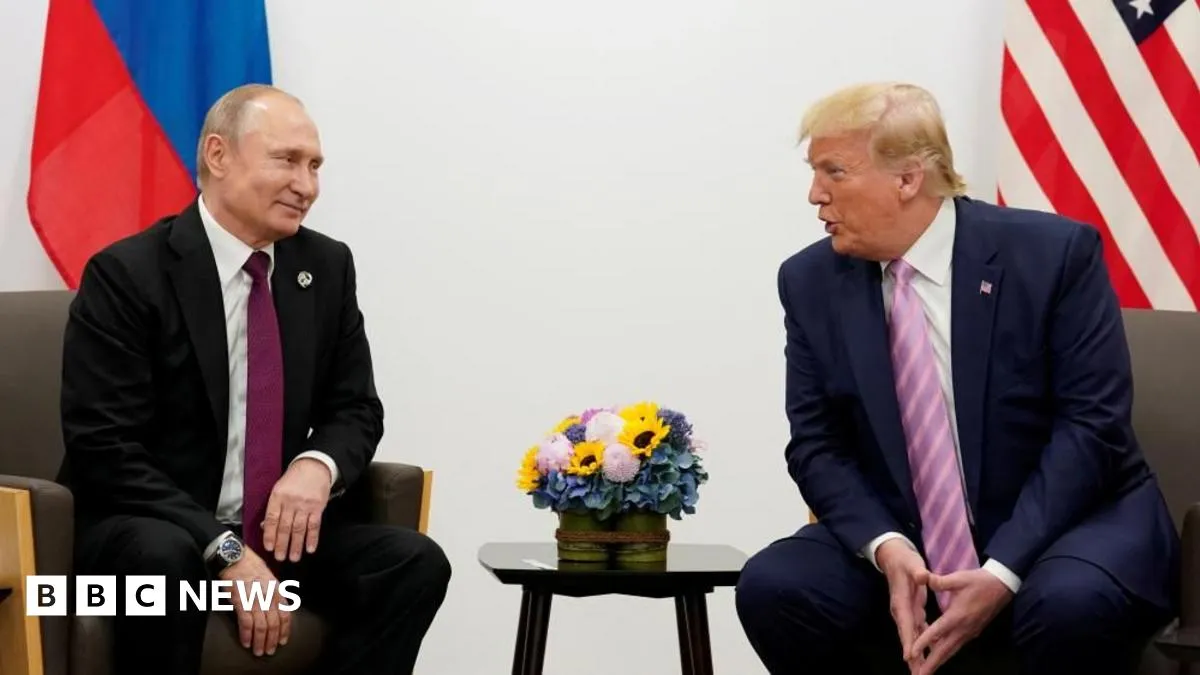
Reports from news agency Reuters indicate that a significant call between Donald Trump and Vladimir Putin is currently underway, as confirmed by a White House official. As we await further details on this pivotal discussion, it's essential to understand the context surrounding this call and its potential implications for the ongoing conflict in Ukraine.
In a notable development prior to the Trump-Putin call, representatives from Ukraine and Russia met face-to-face in Istanbul for the first time since March 2022. This meeting was a small step forward in diplomatic efforts, although it did not yield a breakthrough on the crucial issue of a truce. The only agreement reached was a prisoner swap, with each side returning 1,000 prisoners of war. Ukrainian Deputy Foreign Affairs Minister Serhiy Kyslytsya described the swap as a satisfactory conclusion to a challenging day. Meanwhile, Russian aide Vladimir Medinsky expressed contentment with the discussions, indicating a willingness for continued dialogue.
During a recent briefing, White House Press Secretary Karoline Leavitt provided limited information regarding the anticipated Trump-Putin call. Her comments were intentionally vague, possibly to avoid limiting the White House's options or to afford Trump some flexibility in his discussions. Trump has expressed a strong desire to end the fighting in Ukraine, claiming in February that a ceasefire could be achieved within weeks—a prediction that has yet to materialize. This ongoing conflict puts the administration in a precarious position, as they attempt to navigate their previous assertions.
As the call approaches, U.S. Vice President JD Vance has commented on the current impasse in talks regarding the war in Ukraine. He stated, "I think the president's going to say to President Putin: 'Look, are you serious? Are you real about this?'" Vance highlighted the uncertainty surrounding Putin's strategy in resolving the conflict, suggesting that the U.S. may eventually need to distance itself from the situation, framing it as a conflict primarily for Biden and Putin to resolve.
Leavitt emphasized that Trump's primary objective for the upcoming call is to advocate for a ceasefire, reflecting his growing frustration with both sides of the conflict. When questioned about the possibility of an in-person meeting between Trump and Putin, she indicated that the president would be open to such an arrangement. Furthermore, Leavitt suggested that all options, including potential secondary sanctions, remain on the table as the administration seeks to navigate this complex geopolitical landscape.
In a recent statement, Trump expressed his commitment to bringing peace to the region, stating, "Hopefully it will be a productive day." His planned discussions with Putin will focus on halting the ongoing violence in Ukraine and addressing trade issues. Following his call with Putin, Trump is expected to engage with Ukrainian President Volodymyr Zelensky and various NATO allies to further discuss the situation.
As the Trump-Putin call unfolds, there is a palpable sense of anticipation regarding its outcomes. The White House is set to provide updates following the conversation, and many are keen to see whether this dialogue will lead to meaningful progress in ending the ongoing conflict in Ukraine. Stay tuned for further updates and analysis on this crucial political development.